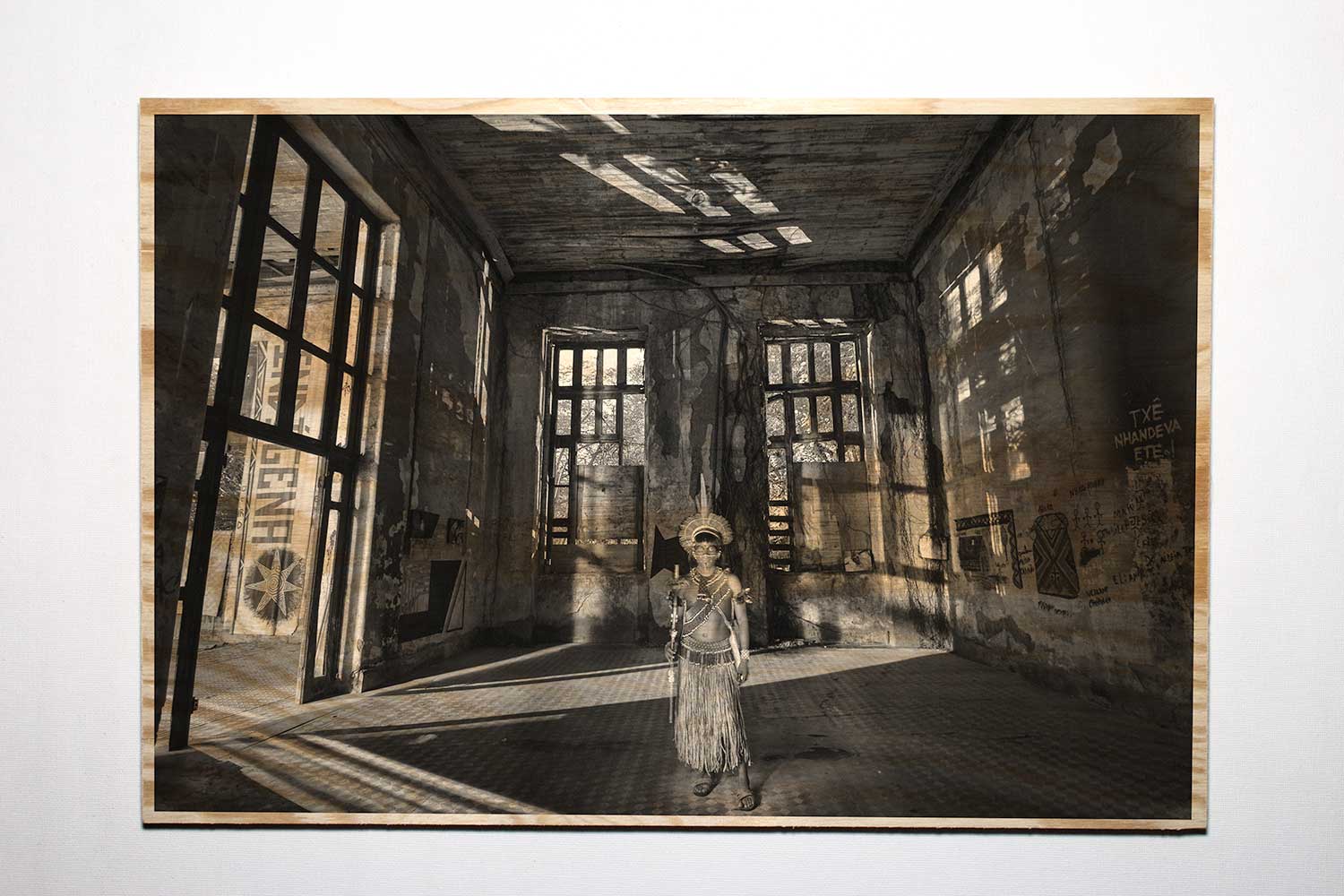When we think of indigenous culture, and the preservation of indigenous culture, not rarely our mind wonders off to a romanticized image of potluck feasts and rites of passage. However, modern society has forced many indigenous to move outside of their land, to seek education and financial resources to support their families, gravitating somewhere between their old ways and the need for maintaining a livelihood within urban context. In many cities all over the world, this has led to indigenous people from all kinds of communities to join together and support each other in finding a balance.
In Brazil, the harsh realities of 400 years of capitalist expansion has ravaged the indigenous’ land and downsized its populations from 10 million in 1500 to an all time low of about 100.000. As every day passes, the threat of disappearance of these tribal cultures, languages, and knowledge increases. Local cultures and styles are extinguished to the profit of a globalized Westernisation. It doesn’t come as a suprise that Brazilian Indians have joined forces to support each other in their struggles. In 1910, the cultural elite of Rio de Janeiro donated a huge mansion and its vast surrounding to serve as a beacon of hope for indigenous communities all over the country, in order to reunite and represent ancestral knowledge. Named after a brightly feathered parrot in the indigenous Tupi language (“Maracana”), Aldeia Maracanã has played a vital role in the strengthening and celebration of indigenous culture in an urban environment. At first, it was turned into a research center for Indian studies and until 1978, it was the National Museum for Indian History.
“This museum was the first museum of the indigenous of Americas, humanising the terrible history of the western Christian conquest of Amazonian lands of Brazil”- Kenavo Junti (French activist and filmmaker living in Rio de Janeiro since the nineties).
The building was then abandoned for several decades under the government of the Brazilian Dictatorship. In 2006, Aldeia Maracanã was reclaimed when an indigenous community moved in. Since the reoccupation nearly a decade ago, about 70 Indians of 17 different Brazilian tribes had moved into the building and its surrounding compounds, offering refuge for indigenous coming to the city to find work, to get medical care or sell crafts and left without housing. Most of the roof of the old museum had collapsed, and vines were growing along the sides of the walls. Thus, the Maracanã community had soon built a collection of modern houses out of bricks and thatch in the outside gardens, remaining unnoticed to the outside world. As the community became more established, they started to organize cultural events, such as storytelling for children, workshops on indigenous crafts, ceremonies, welcoming musicians, punks, activists, photographers and people from all walks of life. Maracanã village became a meeting place for indigenous and non-indigenous, a language school for different tribal dialects, a gallery for art and indigenous body painting: a living museum and sanctuary.
Aldeia Maracanã might have gone relatively unnoticed, had it not been for Rio’s urban reshaping plans. Following two brutal evictions, the building was slated for demolition in 2013, making way for a planned 10,000 car parking lot as part of the $500 million renovation for the nearby Maracanã Stadium. Far from glamorous, sports mega-events like the World Cup in 2014 deeply contribute to the continued violation of Brazilian Indians’ rights, the dispossession of their land and natural resources, displacement of their communities, and long standing cultural oppression.
“Everything is being done for FIFA, sponsors and corrupted politicians, Rio is in the middle of chaos. For the Indians, the situation is the same. They have no voice. If you try to put yourself against the government, they will call you a vandal or an invader.” – Paula Vandala, photographer and activist involved with the movement since the eviction in 2013.
Today, the former Indian Museum still hasn’t been demolished, but left unsafe to be re-occupied after the riots in 2013 and 2014. Rio’s Indian Museum of Botafogo claimed replacement for the former Indian Museum at Aldeia Maracanã in 2014, but this never happened as the museum’s representation of indigenous culture and history is highly controversial. It is heavily criticised by many Indians for its colonial and westernized portrayal of their people’s history, giving the idea that there are no Indians left in Brazil. On top of this, the reshaped surrounding of the Maracanã stadium has turned into a ghost town after the Olympics of 2016. Public resources were used for extensive modifications of the famous soccer stadium, “The pedestrian bridge over there cost R$14 million,” says Paulo César Vidal, a supporter of the indigenous community. “But no one ever uses it.”
Given the State’s unfulfilled promise, in November of 2017, the indigenous inhabitants of the Museum who had been forcibly evicted by the Military Police in 2013, and had not been among those who had taken public housing from the State, returned to the land intent on reclaiming the parking lot as an Indigenous University in the middle of Rio de Janeiro’s urban core. A place to spread indigenous knowledge about agriculture and sustainability. Because to this day, about 250 indigenous languages are still alive in Brazil, representing different communities with each their own traditions and (oral) history. The dozen people now left at the ground of the former Indian Museum are intend on spreading this knowledge and awareness:
Korubo, who arrived in Rio five years ago from the state of Acre in the Amazon rainforest, where his tribe still lives, explained, “We want to show society that Indians are doing good things. Look at the people running around this place [Rio de Janeiro]. The air they breathe is so polluted from all the cars. If you would ask them, they sure would prefer to have some trees.”

